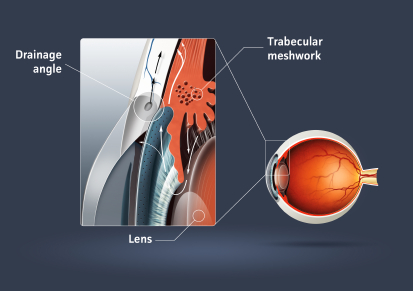Glaucoma
Double Vision Double Vision
Visual Disturbances
Glaucoma is the name given to a group of eye diseases in which the optic nerve at the back of the eye is slowly destroyed. In most 
This is not just subjective change in Glaucoma but an objective change:
 very concerned. My Tonometry reading for intraocular pressure (IOP) was 22. This could lead to blindness. After cranial adjustments with Dr. Fields my IOP is down to 16. This is totally normal! Thank you God and thank you Dr. Fields.
very concerned. My Tonometry reading for intraocular pressure (IOP) was 22. This could lead to blindness. After cranial adjustments with Dr. Fields my IOP is down to 16. This is totally normal! Thank you God and thank you Dr. Fields.
The fear is that the increases pressure in the eye will lead to blindness. Usually, your ocular pressure is kept higher than air pressure but lower than blood pressure. Properly moving the cranial bones allows the fluid pressure in the eye to normalize. It must be noted that when tonometry testing is done it should be performed at the same time of the day as daily fluctuation occurs.
Double vision or Diplopia is a condition in which the person is unable to focus their eyes without tremendous strain. Their comfortable eye position causes them to see two disparate images, hence the name double vision. The ability of the eyes to focus on a single image depends on the muscles of the eye working together. Double vision occurs when the eyes are unable to aim the visual field at the same image at the same time and the images cannot superimpose. Causes of Diplopia can be as severe as a tumor or Multiple Sclerosis but most of the time it is not a symptom of something life threatening.
The muscles of the eye work together in a simple fashion: they have common nerve enervation. The brain sends out one signal, and matching muscles in each eye receive the signal. The muscles contract the same amount (because there is only one muscle contraction command), and normally the eyes move the same distance in the desired direction. But with asymmetrical eye sockets, the eyes move different distances with the same amount of muscle contraction. This makes visual focusing problematic and, in severe situations, it leads to double vision. Endonasal cranial adjusting helps this problem by changing the shapes of the orbits of the eyes. As the skull is optimized, the orbits
of the eyes achieve their ideal shapes, and the visual focusing mechanism operates as it was designed.
I have had excellent results with people who have double vision and Lazy Eyes (Strabismus). Number of treatments can be 10 for less severe cases and up to 30 for those with severe double vision.
Many people who do not have diplopia, strabismus or even need corrective lenses still report improved vision. This is reported in those who depend on their vision for high level use like baseball players or pilots.
One man who came to my office reported he was blind in his left eye and drove home from his first visit covering his right eye because he was astounded to be seeing in his left eye for the first time since his stroke 3 years earlier.
